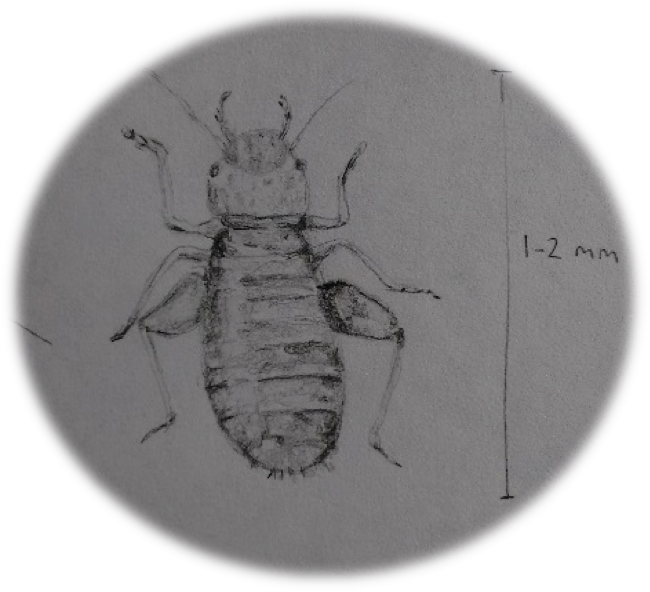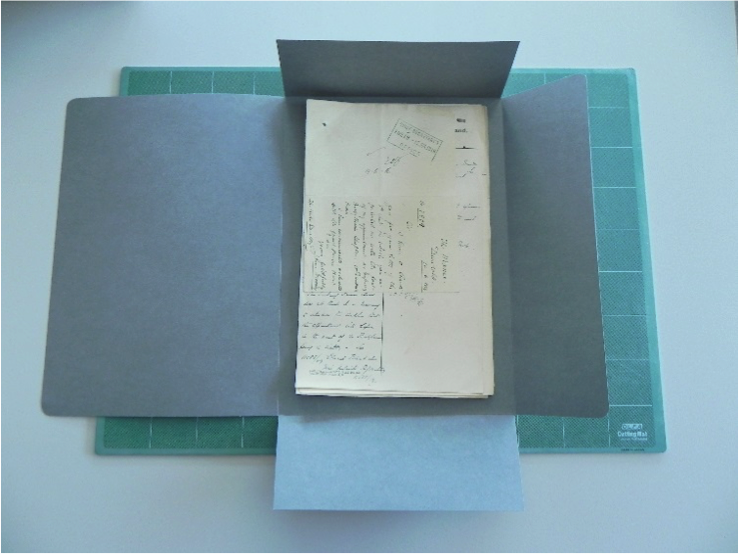Looking after your letters
A guest blog post by Charlotte Anstis, a Conservation Intern at the National Archives of Ireland
Through the centuries paper has shown itself to be an incredibly robust and flexible material in many ways, illustrated by its sheer survival alone. Its longevity and condition are, however, greatly determined by the care and handling it receives and the conditions it is kept in throughout its lifetime. Paper will naturally age over time but there are some simple ways in which you can care for your letters to keep them in a good condition to enjoy now and for the future.
When handling you letters….

It is important firstly that you have clean, dry hands. Grease from food and oils from your skin are detrimental to paper. Gloves are also an option (cotton, or nitrile/surgical gloves), though it is important to be aware that wearing gloves will reduce your sensitivity and might make safe handling more difficult. It is a good idea to ensure that you have plenty of space to look at your letters and a flat clean table or surface. Nearby food or a lurking mug of coffee could spell disaster. If possible avoid folding papers as this will create weaknesses along the folds.
Photographs are particularly sensitive (especially the emulsion surface) and it is always advisable to wear gloves when handling or hold at the edges.
If your letters have tears avoid the temptation to repair with sellotape or other tapes as the plastic and adhesives will discolour and damage paper over time. It is better to seek help from a conservator than repair items yourself.
Storage for your letters….
Storage plays a large part in their condition. The surrounding environment will greatly effect material. Paper is reactive to moisture. It can become dry and brittle where there is too much heat and not enough moisture in the air and will be more susceptible to mould damage and attack from pests such as insects when the relative humidity is too high. Light (especially ultraviolet) and heat accelerate chemical damage within paper and photographs.
Try to avoid storing your letters near heat sources such as radiators. Equally, damp environments or environments where the conditions fluctuate such as garages and attics are also not ideal.
When displaying letters or any paper document or photograph, light damage will effect material. It can cause paper to lighten or discolour, inks and pigments can fade. Photographs are particularly sensitive to light, the effects of which can be devastating. It might be worth considering scanning or using a digital camera to capture items to use as a facsimile.
Paper makes a great snack for insects such as silverfish and some beetles, or a good nesting material for rodents so always be on the look-out for damage by pests.


Keeping documents in appropriate folders will provide a level of protection. It is important to use folders and boxes that are acid free and are a close fit (without being too snug) to avoid damage from movement (a few suppliers have been listed below).

There is a good range of storage options to choose from, including transparent polyester pockets (everyday plastic pockets should be avoided as they degrade paper as they deteriorate), and you can make your own folders and boxes using acid free card.
There are some useful websites and resources listed below if you would like to explore the care of material more. You can also contact a conservator if you would like any advice, either on the treatment of your material or for help with storage and environment control.
References
National Library of Ireland – Caring for Family Papers
Northeast Document Conservation Center – Preservation Leaflets
Scrapbook.com – Protect Photos, Documents and Other Papers From Natural Destruction Over Time
Click here to read a featured profile of the National Archives of Ireland and more insights into the ongoing conservation work carried out by Zoe Reid, Head of Conservation and Charlotte Anstis, a Conservation Intern.